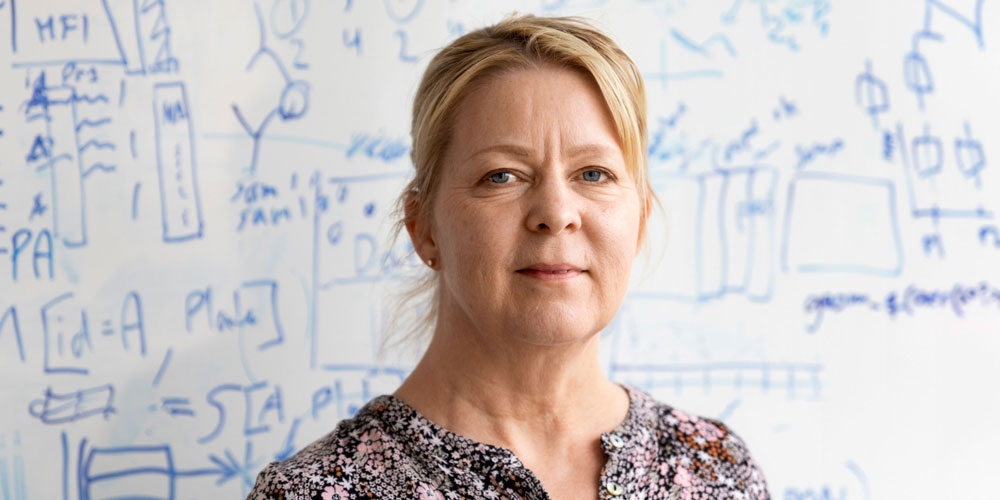microRNA important for understanding cancer

The discovery of microRNAs and their role in regulating the activity of genes in cells has been honoured with this year's Nobel Prize. KTH professor Cecilia Williams has studied different types of microRNAs and their role in breast cancer cells.
"This discovery is important for our understanding of how cancer develops and functions, and a necessary basis for developing new treatments," she says.
US professors Victor Ambros and Gary Ruvkun are awarded the 2024 Nobel Prize in Physiology or Medicine for their discovery of microRNA and its role in post-transcriptional gene regulation. In 1993, they discovered a fundamental mechanism for how gene activity is regulated in all multicellular organisms.
All cells in the human body contain the same genetic material, DNA, but the set of proteins varies depending on the cell type. For muscle cells, nerve cells and gut cells to fulfil their different functions, gene activity is carefully regulated so that the right genes are active at the right time in each cell and the right proteins are made.
"Great discovery"
The Nobel Laureates have described how an important part of protein production is controlled by microRNA. Prior to the discovery, it was known that DNA, through a process called transcription, is transferred to mRNA and then to the body's cells for protein production. The Nobel Laureates' discovery showed that very small RNA molecules, microRNAs, influence the latter part, i.e. how mRNAs are translated into protein. In each cell type, genes are regulated so that only relevant parts of the DNA are read and activated, and microRNAs are an important component of this.
"This is a major discovery that turns our understanding of how genes regulate protein expression upside down. How all life works has to do with how our genes are expressed," says Williams, Professor of Biotechnology and Cancer.
Understanding how gene regulation works has long been an important goal because misregulation can lead to serious diseases such as cancer and autoimmunity.
Participated in research on microRNA and breast cancer
Williams has been studying the roles of microRNAs in cancer since 2008, including discussions with Frank Slack, who participated in the work around the Nobel Prize and published an article in the prestigious journal Cell in 2005 on how microRNAs regulate oncogenes in cancer.
"I have done some studies on how microRNAs change in breast stem cells, which have many similarities to breast cancer cells, and how different microRNAs affect cancer cells. We have found that two microRNAs, miR-206 and miR-200a, have important roles in triple-negative breast cancer. They can both prevent cells from migrating, which is an important step for cancer cells to metastasise. Tumours therefore often get rid of these microRNAs and adding them, for example, could be a way to treat cancer," Williams says.
Challenging to create applications
In the field of cancer research, the Nobel Prize winners' discoveries have mainly contributed to a better understanding. According to Professor Williams, many attempts have been made to translate results into clinical applications, but the challenges have been too great.
"It was realised around 2005 that microRNAs are important for cancer, and efforts have been made to see if they can be added or inhibited by delivering so-called mimics or inhibitors, and also to use different types of microRNAs as biomarkers for different cancers, for example to find breast cancer-specific microRNAs in blood samples. However, delivering, detecting and measuring microRNAs is technically challenging. A lot of work has been done to develop applications and they may come but they have not manifested yet," Wiliams says.
Text: Sabina Fabrizi
